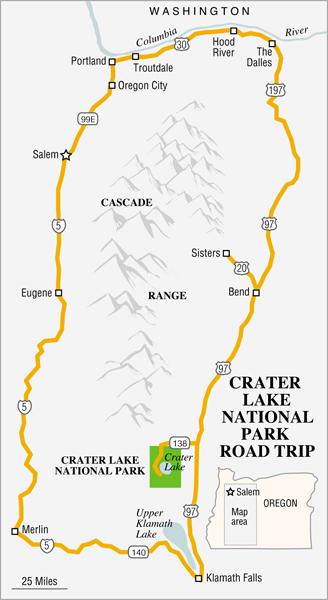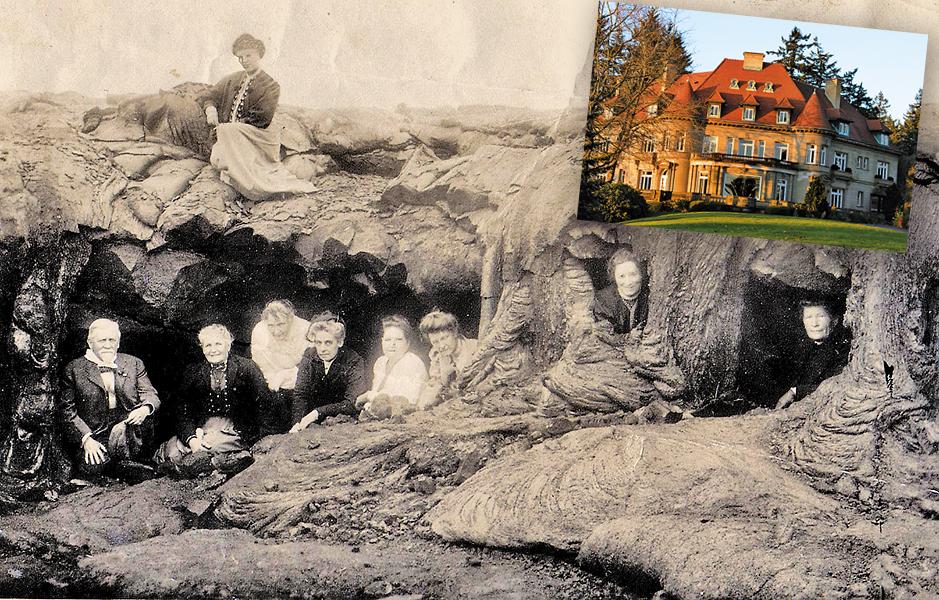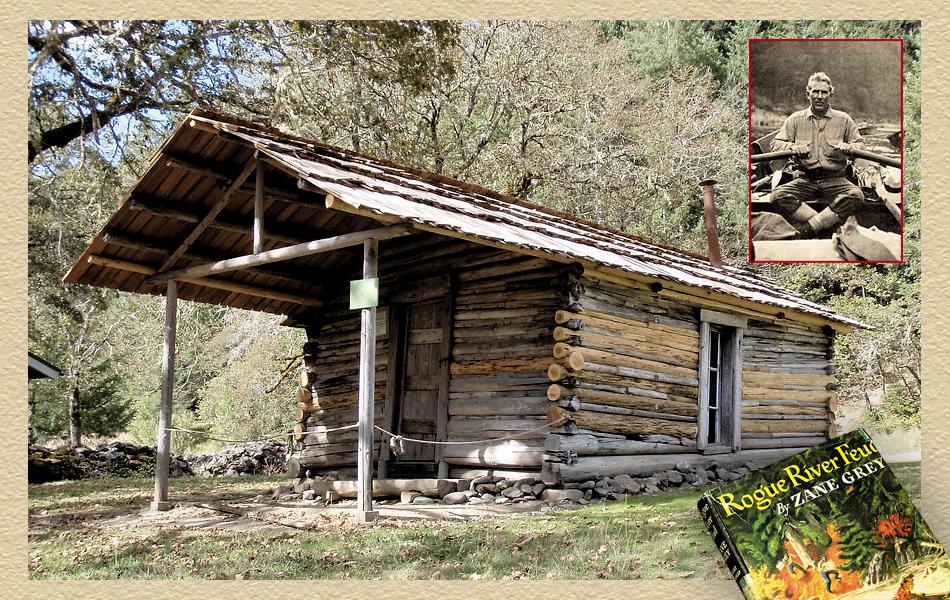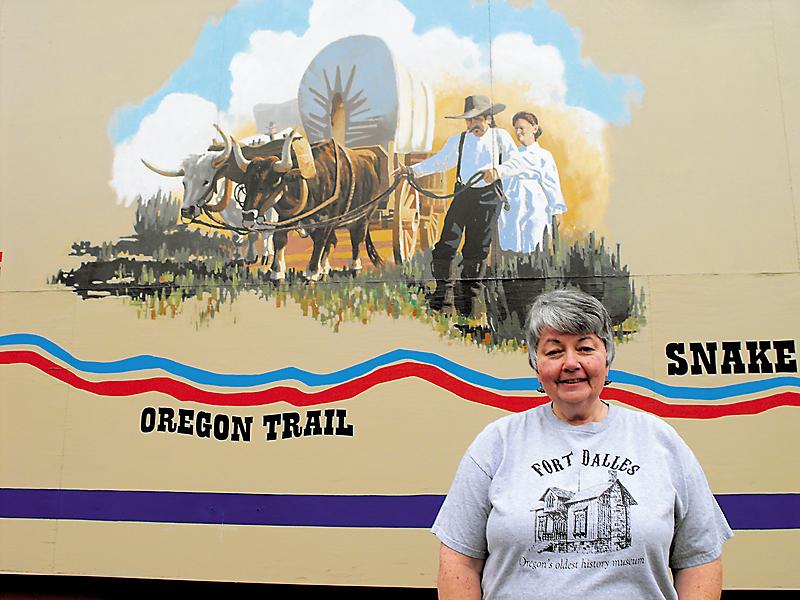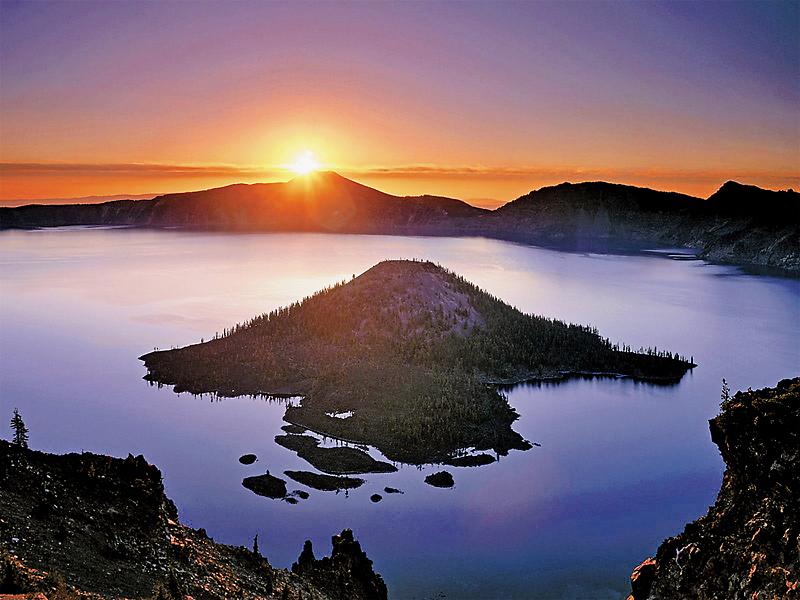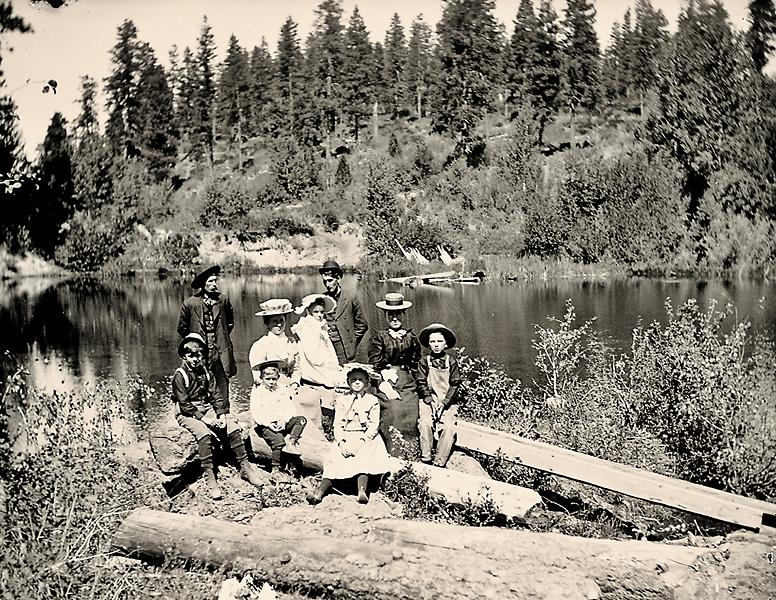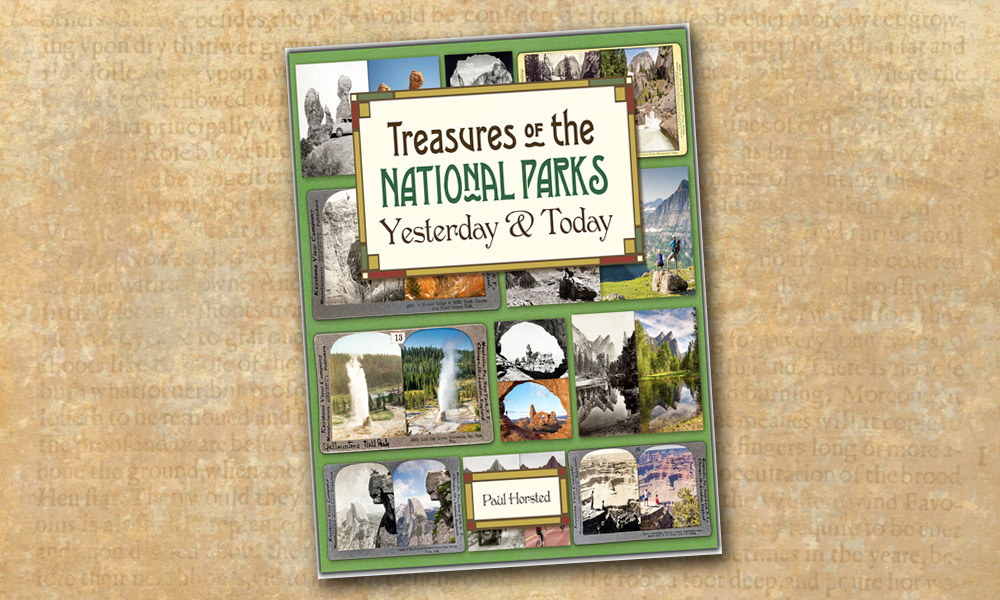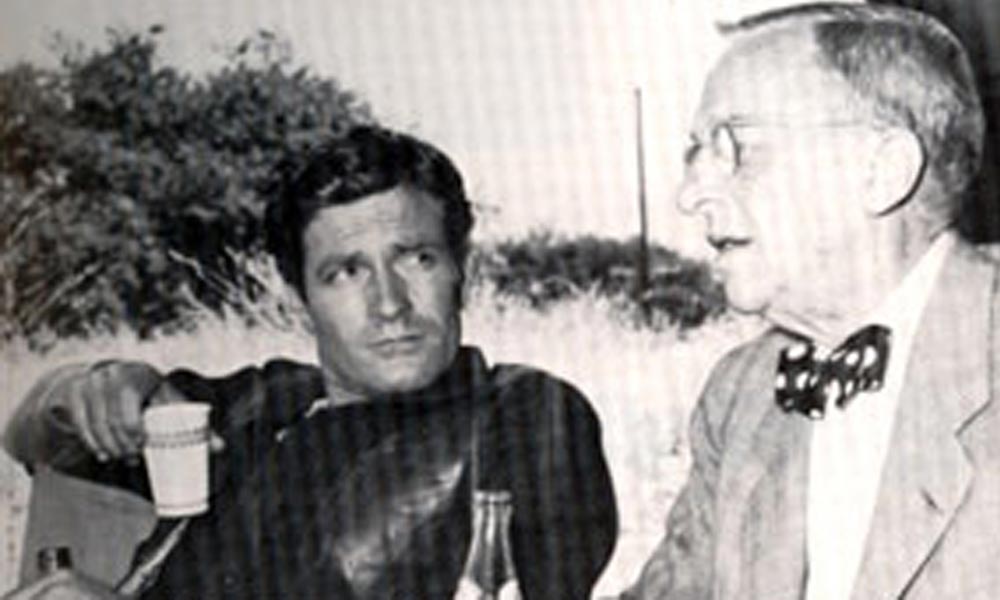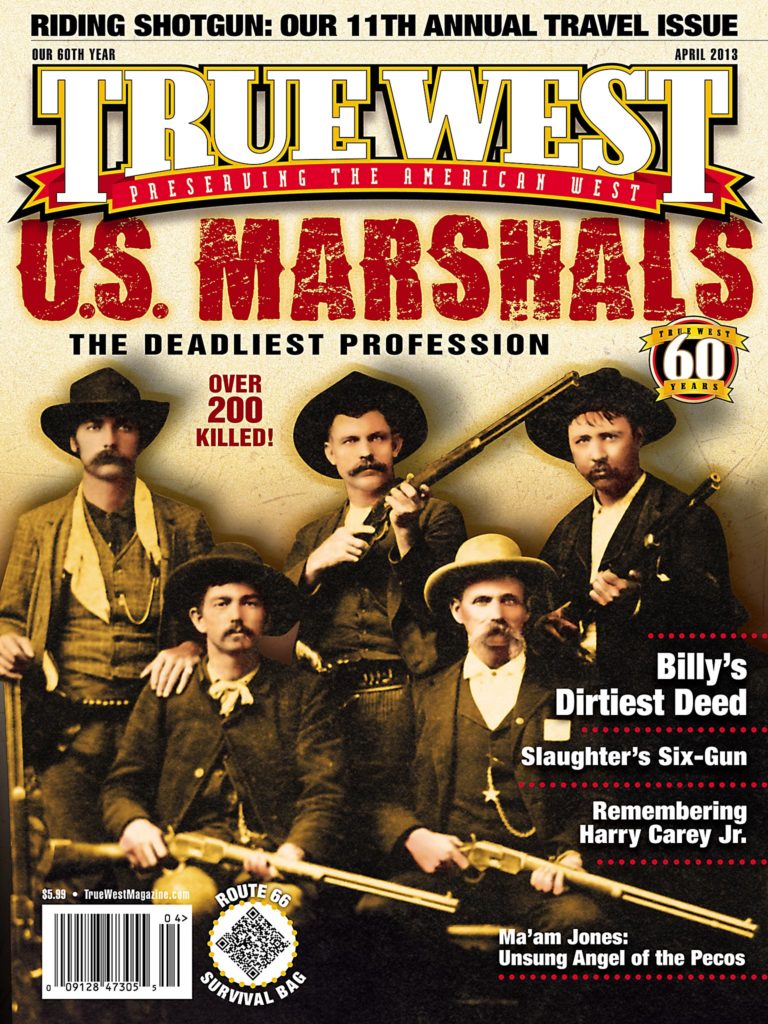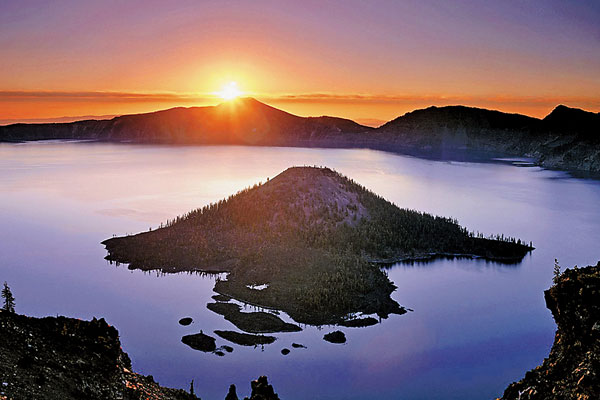 Deep in the wilderness of the Cascades lays Oregon’s crown jewel, Crater Lake. The Klamath and Modoc Indians have long revered the lake, which they call Giiwas, as a place of power and danger, a sacred site for vision quests and prayers.
Deep in the wilderness of the Cascades lays Oregon’s crown jewel, Crater Lake. The Klamath and Modoc Indians have long revered the lake, which they call Giiwas, as a place of power and danger, a sacred site for vision quests and prayers.
In the spring of 1853, Isaac Skeeters, John Wesley Hillman and Henry Klippel were searching for the rumored Lost Cabin gold mine when they stumbled upon what they called Deep Blue Lake. Over the years, other prospectors and even a military road-building crew discovered the lake as well, but it didn’t get the name Crater Lake until newspaper editor Jim Sutton called it that in 1869. Good thing he did, because William Gladstone Steel read an article about Crater Lake as a young boy and vowed to visit there one day. In 1885, Steel finally gazed in awe upon the lake’s beauty; as an adult, he threw his life and fortune into establishing and preserving Crater Lake National Park—Oregon’s only national park—which President Theodore Roosevelt signed into law in 1902.
A MEANDERING ADVENTURE
Getting to Crater Lake is still an adventure; volcanoes punctuate the landscape, while the wilderness is still very much part of the terrain. If you’re in a hurry to tour Oregon, you can take the freeway from Portland. But the meandering route gives you a chance to oggle scenery and is chock-full of history.
Located at the confluence of the Willamette and Columbia Rivers, Portland was named on the toss of a coin in 1845—it could have been called Boston. A visit to the Oregon Historical Society museum in downtown Portland is a good introduction to state history. The elegant 1914 Pittock Mansion, home to Oregon Trail pioneer and newspaper magnate Henry Pittock,
is a tourist favorite. If you like to quaff handcrafted ale, visit the
historic McMenamins Edgefield in Troutdale. Built in 1911 as the county poor farm, the resort is a mixture of elegance and whimsy.
LEWIS AND CLARK COUNTRY
Follow the wind eastward into the Columbia Gorge National Scenic Area in the footsteps of Lewis and Clark. For an osprey’s point of view, take a riverboat cruise on one of the sternwheelers like the Queen of the West, or on one of the National Geographic’s Lindblad Expedition ships.
By auto, you can travel through Troutdale onto the Historic Columbia River Highway. The oldest scenic highway in the United States, completed in 1922, it was constructed to be artistically woven into the landscape. The road passes a series of over 70 waterfalls, including 620-foot-high Multnomah Falls.
Continue through the gorge, past towering mountains and vertical basalt cliffs, to Hood River, on the northern flank of Mount Hood. The Hood River County History Museum offers a wide-ranging collection of pioneer artifacts, and fruit and logging industry tools.
Hood River’s Columbia Gorge Hotel, on a bluff overlooking the Columbia, was built in 1920 as an end destination for scenic highway travelers. The hotel had a guest list including Presidents Roosevelt and Coolidge and actresses Myrna Loy and Jane Powell.
At the eastern end of the Columbia Gorge, The Dalles is your next stop. For over 10,000 years, this area on the Columbia River has been a gathering and fishing site for American Indians. The Dalles was the end of the overland Oregon Trail. At this point, pioneer families had to float their wagons through the dangerous rapids French-Canadian fur traders called “le grande dalles” of the Columbia.
Interpretive signs mark Rock Fort Camp, where Lewis and Clark camped in 1805 and 1806. The Columbia Gorge Discovery Center offers exhibits on Lewis and Clark, as well as Columbia Basin Indian life. A full-sized mammoth steps out of the wall in an exhibit on the ice age Missoula Floods.
Fort Dalles was built following the 1847 Whitman massacre, and it was a strategic military location during the Cayuse and Yakama Indian wars. The original Fort Dalles Surgeon’s Quarters, built in 1856, is one of Oregon’s oldest history museums.
Wasco County once covered an area that reached all the way to Wyoming. The town’s original Wasco County Courthouse, built in 1859 with two jail cells, is now a museum.
FAREWELL BEND
Next, head south on U.S. Route 197 to Bend. Once called Farewell Bend, this site was one of the last relatively easy spots for Oregon Trail wagons to ford the Deschutes River. Peter Skene Ogden led a fur trapping party to the region in 1824, and John C. Frémont also surveyed the area.
Bend’s High Desert Museum is a wonder. Designed to re-create a Northern Paiute rock shelter, it features exhibits on mining and offers an 1885 settlement town complete with a Wells Fargo and assayer’s office and a Chinese mercantile.
Take a side jaunt onto U.S. Route 20 to Sisters, nestled near the Three Sisters volcanoes. Established in 1865 as a military outpost named Camp Polk, the site was intended only to be a winter camp spot while the army volunteer regiment responded to Indian raids. Instead, the camp grew into a community that thrived on logging and the area’s proximity to the adjacent Three Sisters Wilderness. The town gives off an 1880s feel with its specialty stores and galleries. Stay at nearby Black Butte Ranch, or head to Hotel Sisters, where you can refresh yourself at Bronco Billy’s Ranch Grill and Saloon.
MODOC WAR SETTING
Nestled inside a caldera, Crater Lake National Park’s towering cliffs cradle the amazingly deep blue waters of the lake in a visually stunning setting. The lake was formed when Mount Mazama—a dormant volcano—erupted about 7,700 years ago. Crater Lake is more than 1,900 feet deep and is the deepest lake in the United States. Surrounding the lake are more than 100 miles of trails, waterfalls and plenty of wildlife. Crater Lake Lodge offers a spectacular view of Wizard Island, at the center of the lake. The Volcanic Legacy Scenic Byway stretches south from Crater Lake past Oregon’s largest lake, Klamath Lake, to Klamath Falls.
The Indian battles of the 1850s heated up in the southern Oregon/California area. Modoc Chief Kintpuash, known as Captain Jack, taunted the U.S. Army near present-day Klamath Falls during the Modoc War of 1872-73. The death of Gen. Edward Canby at the hand of Captain Jack and his Modocs during a peace parlay made global news. Canby was the only U.S. Army general to be killed during the Indian Wars.
Fort Klamath in Chiloquin operated from 1863 to 1890. Today, it’s a museum with displays of fort history and a replica of the guardhouse. Other tastes of the Old West can be found at the Favell Museum in Klamath Falls, home to a premiere collection of Western art and American Indian artifacts, and the Klamath County Museum, which features historical photos and exhibits of pioneer and natural history.
Baldwin Hotel Museum served as a hotel from 1908 to 1977 and once hosted Teddy Roosevelt. Today, your best bet to hang your hat is the Running Y Ranch for a resort experience in the heart of the Cascades.
ROGUE RIVER RETREAT
To get to the Rogue National Wild and Scenic River, you will need to drive by Grants Pass, so named to honor Gen. U.S. Grant’s victory at Vicksburg. A popular stagecoach stop in the 1860s, it became a railhead on Christmas Eve 1883 at the completion of the Oregon-California Railroad (now Southern Pacific).
The Rogue River corridor offers plenty of adventure. Put in at Merlin or Grave Creek for gold panning and white-water rafting. Take a river tour to see Zane Grey’s cabin on the banks of the Rogue River. This was his private fishing and writing retreat. He set his novel Rogue River Feud on the river. Located nearby is Hellgate Canyon, a backdrop made famous by John Wayne in 1976’s Rooster Cogburn.
Near the Rogue River is Wolf Creek Inn, the oldest, continuously-operated hotel in the Pacific Northwest. Wolf Creek Inn got its start in 1883 as a stopover on the 16-day stagecoach ride between San Francisco and Portland. Known as a “first-class hotel with an outhouse,” it became a refuge for Hollywood stars, including Mary Pickford, Douglas Fairbanks Jr., Clark Gable and Carole Lombard. It was also a writing retreat for Jack London.
Next, head north toward Eugene. Lane County has no shortage of historical museums, including the Applegate Pioneer Museum and the Bohemia Gold Mining Museum. The University of Oregon’s Museum of Natural and Cultural History is where Oregon’s most precious artifacts are collected, including sagebrush sandals over 10,000 years old, found buried in ash from the eruption of Mount Mazama.
CAPITAL CHARMS
Farther north on the 45th parallel you’ll find Salem, which Congress named as the capital of Oregon Territory in 1851. Near Salem’s capitol topped with a golden pioneer, you’ll find Willamette Heritage Center at the Mill, home to 14 historic structures from the earliest history of the Willamette Valley. The 1841 home of missionary Rev. Jason Lee is the oldest-standing wood frame house in Oregon. Lee’s impassioned speeches moved the hearts of missionaries and helped trigger the Oregon Trail migration. The 1895 Thomas Kay Woolen Mill is one of the best-preserved Victorian-age factories in the West and was designated an American Treasure by the National Park Service.
Cruising north past fertile farm land will remind you why the Willamette Valley was the end goal of many Oregon Trail emigrants. Mount Hood, at 11,240 feet, stands as a snow-capped sentinel overlooking Oregon City. Oregon’s highest summit stood as the great barrier between The Dalles and the Willamette Valley, until Sam Barlow carved the Barlow Road over the mountain in
1845-46. Oregon City is perched on the Willamette River near Willamette Falls Early pioneer history is on display at the Museum of the Oregon Territory and the McLoughlin House. Dr. John McLoughlin, known as the “Father of Oregon,” was chief factor at nearby Fort Vancouver.
The 1847 Rose Farm, where the first Oregon Territorial Legislature met in July 1849, makes for a fitting end to an exploration of Oregon’s Old West past.
Photo Gallery
– True West Archives –
– True West Archives –
– Courtesy Crater Lake National Park –
– Courtesy Klamath County Museum –


